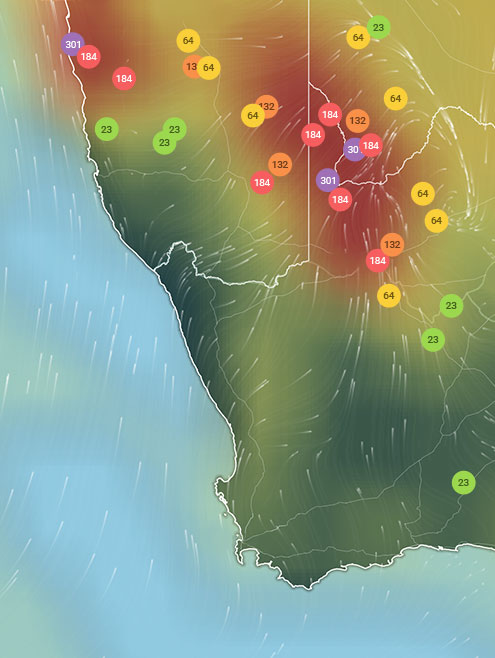모니터를 장착하여 소속 도시의 공기질 데이터에 공헌하세요.
67.8K 사람들이 이 도시을 팔로우합니다






공기질 데이터 기여자
기여자 및 데이터 소스에 관하여 좀 더 자세히 알아보세요| 날씨 | 구름 조금 |
| 온도 | 77°F |
| 습도 | 78% |
| 바람 | 5.7 mp/h |
| 기압 | 29.8 Hg |
| # | city | 미국 AQI |
|---|---|---|
| 1 | 라호르, 펀 자브 | 99 |
| 2 | 카라치, 신드 주 | 92 |
| 3 | 페샤와르, Khyber Pakhtunkhwa | 65 |
| 4 | Haripur, Khyber Pakhtunkhwa | 59 |
| 5 | 라왈핀디, Punjab | 45 |
| 6 | 이슬라마바드, Islamabad | 43 |
(현지 시간)
전 세계 AQI 랭킹 보기
| # | station | 미국 AQI |
|---|---|---|
| 1 | Kerry Freight Pakistan Pvt Ltd | 110 |
| 2 | TDF MagnifiScience Centre | 102 |
| 3 | US Consulate in Karachi | 82 |
| 4 | Korangi Sector 15 | 59 |
(현지 시간)
전 세계 AQI 랭킹 보기미국 AQI
92
실시간 AQI 지수
보통
| 일 | 오염 수준 | 날씨 | 온도 | 바람 |
|---|---|---|---|---|
| 수요일, 4월 24 | 보통 84 AQI 미국 | 82.4° 77° | ||
| 목요일, 4월 25 | 보통 83 AQI 미국 | 82.4° 77° | ||
| 금요일, 4월 26 | 보통 80 AQI 미국 | 84.2° 77° | ||
| 오늘 | 보통 92 AQI 미국 | 82.4° 77° | ||
| 일요일, 4월 28 | 보통 68 AQI 미국 | 87.8° 77° | ||
| 월요일, 4월 29 | 보통 100 AQI 미국 | 87.8° 78.8° | ||
| 화요일, 4월 30 | 나쁨 160 AQI 미국 | 86° 77° | ||
| 수요일, 5월 1 | 민감한 사람에게 나쁨 135 AQI 미국 | 87.8° 80.6° | ||
| 목요일, 5월 2 | 보통 80 AQI 미국 | 89.6° 78.8° | ||
| 금요일, 5월 3 | 보통 68 AQI 미국 | 86° 80.6° |
시간 단위 일기 예보에 관심이 있으신가요? 앱 받기
3 Data sources